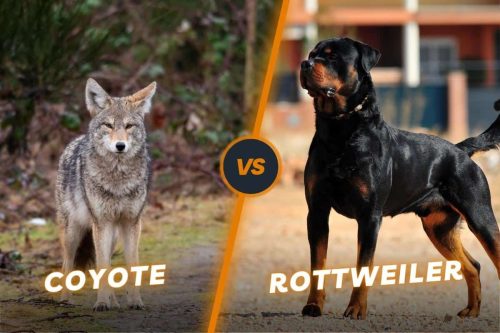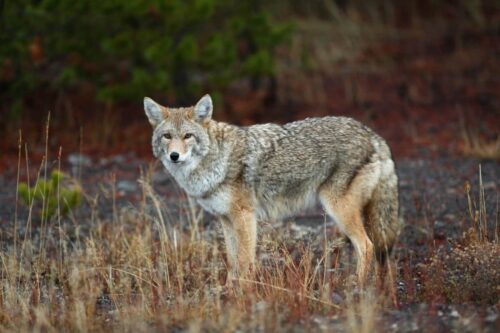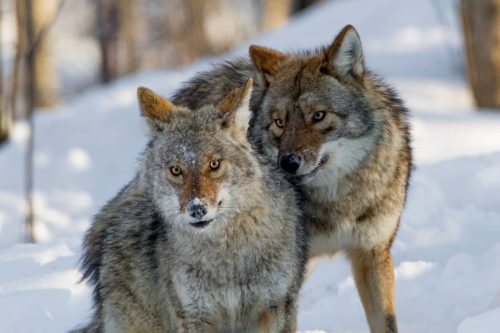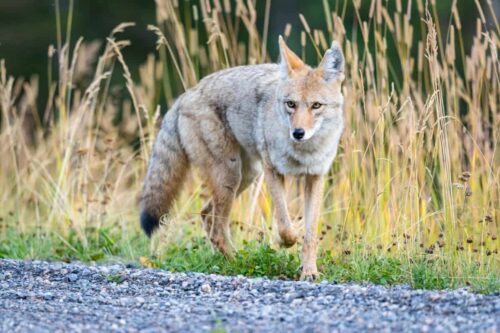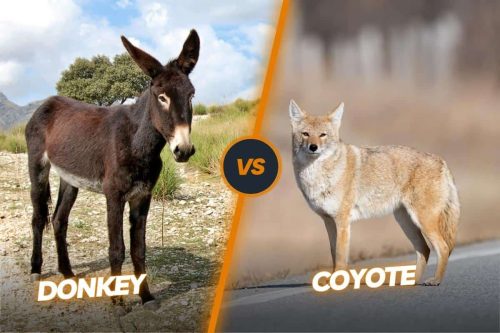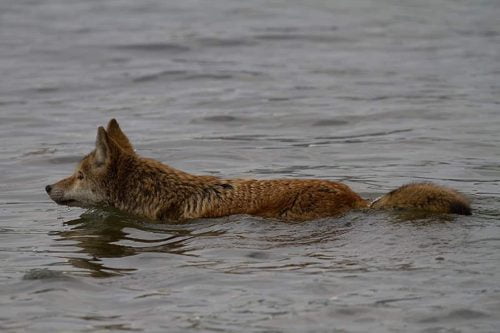Coyote Vs Wolf: Spot The Differences From A Gray Wolf
Coyotes and wolves are among the most prominent members of the canine family. They show resemblance due to their similar facial appearance and color mixture on their fur. If you are looking at them from some distance then it is extremely difficult to point out the exact animals from them. It usually happens at the early stage of their life. However, both of these animals are fearsome predators and have a very active presence in the North American continent.
They are known for their own unique traits and behavior. They might be similar to some extent but there are a lot of differences between these animals. We are going to discuss these animals in detail and compare coyote vs wolf on the basis of their physical attributes and social behavior to clear all the confusion about them. We will compare wolf and coyote side by side.
One important thing you must keep in mind while reading this article is that by wolf we mean gray wolf in this article.
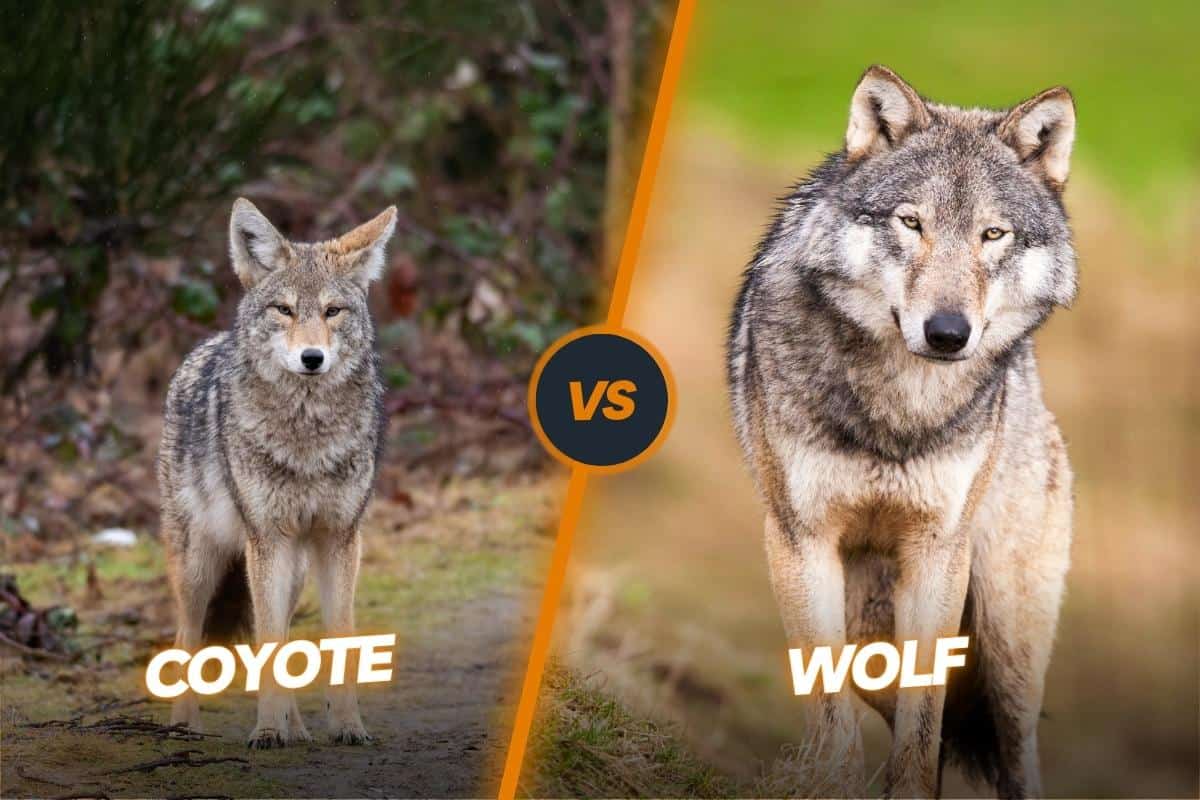
Contents
Key similarities between coyote and wolf
There are some similarities between coyotes and wolves. They are both medium to large size animals having dogs-like appearances. Both of them have the same gray color coat along with some patches of colors like black, white, red, and brown. Both of them are carnivores by nature and like to hunt in packs. For communication purposes, they make different sounds like barking, howling, yapping, etc.
Key differences between coyote vs wolf
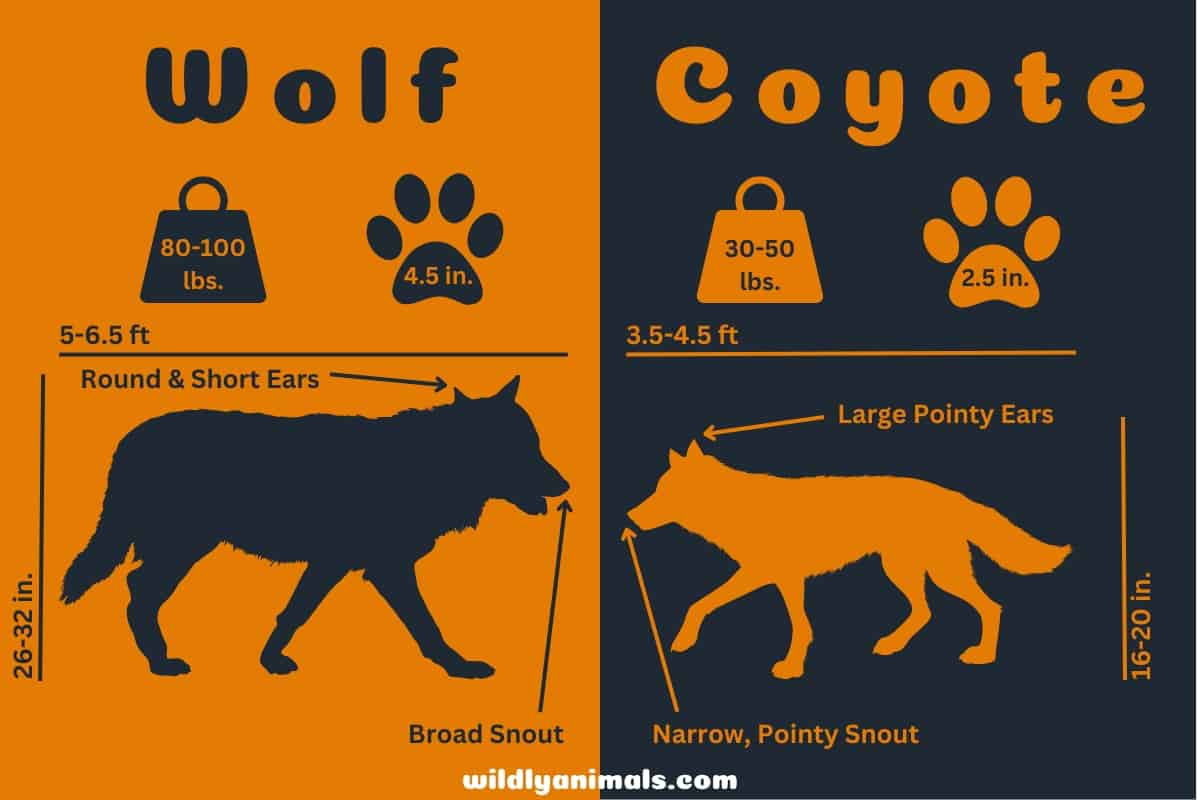
People often raise this question what is the difference between a wolf and a coyote? There are a lot of differences between wolves and coyotes if we compare coyotes and wolves side by side. The main difference comes in terms of their size. The wolf is very much bigger, taller, heavier, and longer animal than a coyote. The wolf has a wider face and very large feet as compared to the coyote. Coyotes comes with small and narrow muzzle but long pointed ears as compared to the large and boxy face of a wolf having round-shaped ears. Coyote also has a long and bushy tail that nearly touches the ground while running as compared to the short but bushy tail of the wolf.
Classification of the coyote and wolf
Coyote or Canis latrans, belongs to a canine family and has also been named prairie or brush wolf. It also belongs to the wolf genus but it is a completely separate specie. They are also closely related to the wolf and they can also mate with the wolf and produce Coywolf.
Wolves are omnivores and also belong to the Canidae family. They have canis genus. There are two wolf species named red wolf and gray wolf. There are many subspecies but the status of most of them is controversial.
Basics of the Coyote
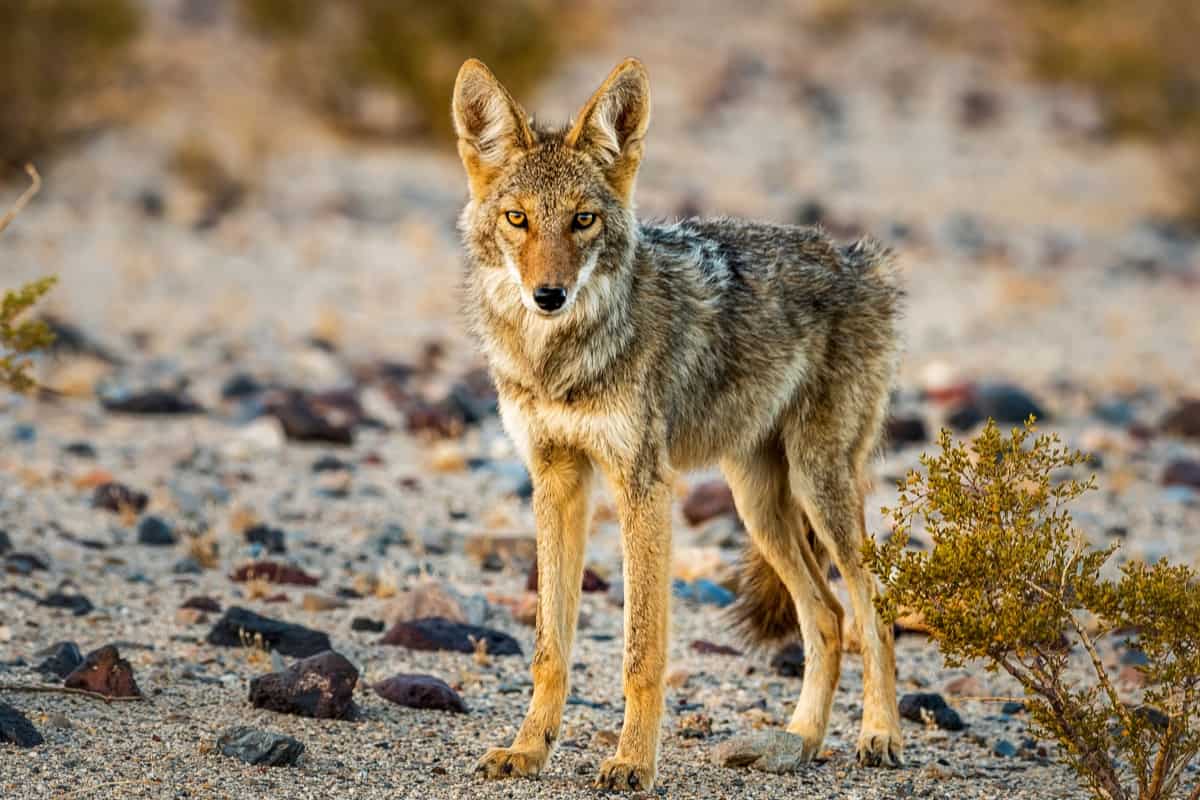
Coyote belongs to the canine family and is native wild animal of North America. It comes with long but pointed ears along with a slender muzzle and bushy low-hanging tail. It has a close resemblance to the German shepherd. It is a highly intelligent wild animal having good communicative skills and adaptable to various kinds of environments. It is an opportunist predator and relies only on animals for its food. Coyotes are smaller in size and sometimes also called prairie wolves, or brush wolves. They like to live in family groups and give birth to at least 3 to 12 pups at a time. They have very keen vision and smelling sense and can easily run up to 40 mph.
Basics of the Wolves
Wolves are large-size canine members that you can mainly find in the areas like Asia, Europe, and North America. They have narrow chests but very long and slender legs. They have big front arms which are highly helpful for running in the deep snow. They can also easily run up to the speed of a maximum of 40 mph. Wolves like to live in big-size packs. That’s why they can easily hunt down some large and dangerous animals like moose, bison, deer, and ilk. They have also been declared apex predators. Male wolves play a leading role in food provisioning, foraging, and traveling while female wolves play a critical role in producing and taking care of pups.
Wolf and coyote comparison
Let’s compare these animals on the basis of their various features.
| Features | Wolf | Coyote |
|---|---|---|
| Weight | Weight: 70 to 150 pounds | Weight: 15 to 50 pounds |
| Face | Larger nose, wider face, | Small nose with a narrow muzzle |
| Tracks | 3.75 to 4 inches | 2.5 to 2.75 inches |
| Diet | Small mammals like mice, rats, rabbits, squirrels, etc. | Mainly target large mammals like moose, elk, deer, coyotes, bobcats, etc. |
| Silhouette | Shoulder height: 26 to 32 inches Foot length: 4.5 to 6.5 inches | Shoulder height: 21 to 24 inches Foot length: 3.5 to 4.5 inches |
| Coat color | Tan, gray, brown, white, and black. | Tan, gray and brown, rarely white and black. |
| Sounds | Long and low howling | Short-pitched howls along with yips. |
| Feet | Huge size | Normal size |
| Legs | Very long | Normal length |
| Habitat | Tundra, forests, mountains, woods. | Deserts, Great Plains, Mountains, forests. |
| Geographical range | Europe, Asia, & North America. | North America. |
| Life span | In the wild: 8-10 years. In the captivity: 18-20 years | In the wild: 14 years. In captivity: 21 years |
Let’s compare these elements in detail on the basis of these differences.
Face: coyote vs wolf
In terms of face, the wolf has a bigger face compared to the face of the coyote. The face of the wolf is also wider as compared to the coyote’s face. Coyote comes with slender face with very large and dark nose pad. Coyotes also come with pointed and taller ears while the ears of the wolf are short but round-shaped.
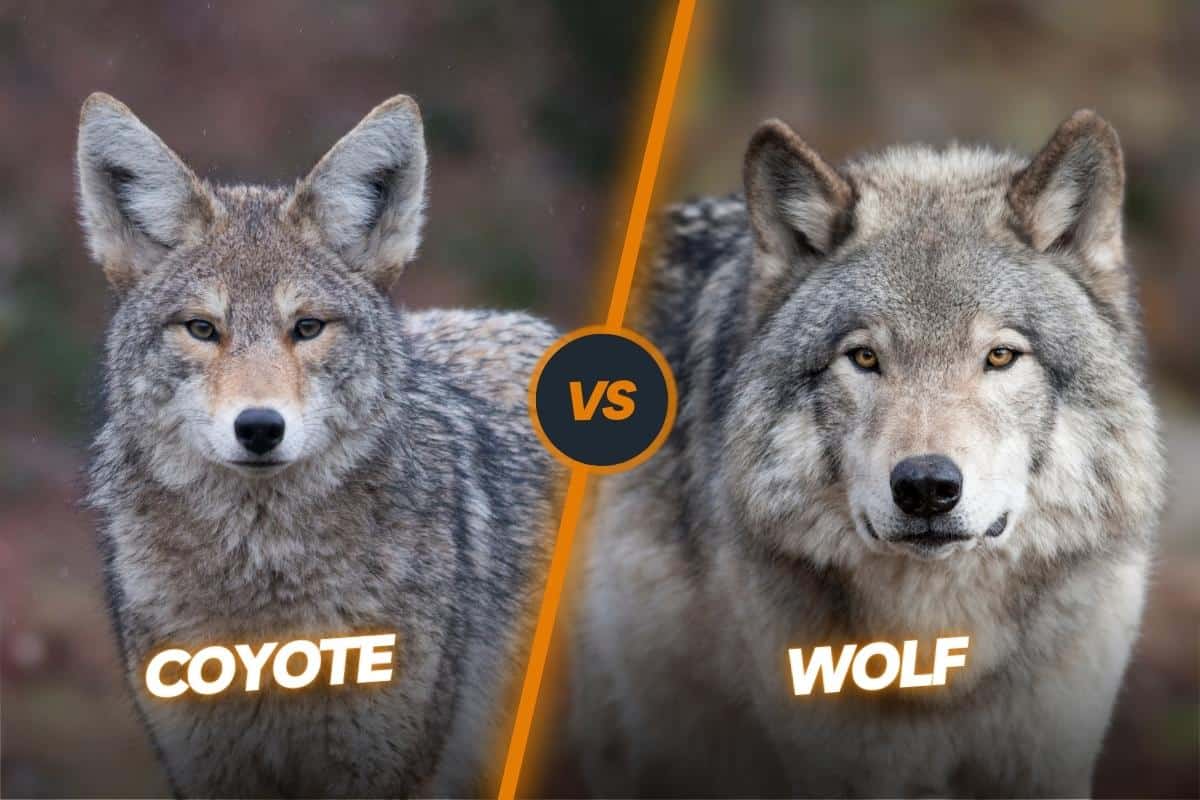
Sounds: Wolf vs coyote
Wolves are very well-known for their haunting vocals at nighttime. They have low-pitched but long and drawn-out howls. They also growl and bark under different circumstances. Generally, it is assumed that they howl at the moon at nighttime. But it is not the case in reality. They actually howl at nighttime for communication purposes. It happens at nighttime because they mostly remain active at nighttime.
They howl to gather their pack members and protect their young pups if they feel any danger. The pitch of their howl is lower than the pitch of normal animals. The howl vocalization of the wolf is sometimes also intermixed with other sounds like yips, yaps, and yodels. On the other hand, the coyote has a much larger and louder pitch than the wolf. They also communicate with the help of their howl in the nighttime. They also communicate with the other members of the pack with the help of their sounds.
Geographical range: coyotes vs wolves
Coyotes could be located throughout the North American continent. They are mainly concentrated in Central and North America, Mexico, and Canada. Wolves could also be traced in these regions but they could also be found in other continents like Asia, Europe, and the Northern side of Africa. If you notice any large-size canine outside the North American region, then you must be damn sure that it is a wolf, not a coyote.
Tracks: wolves vs coyotes
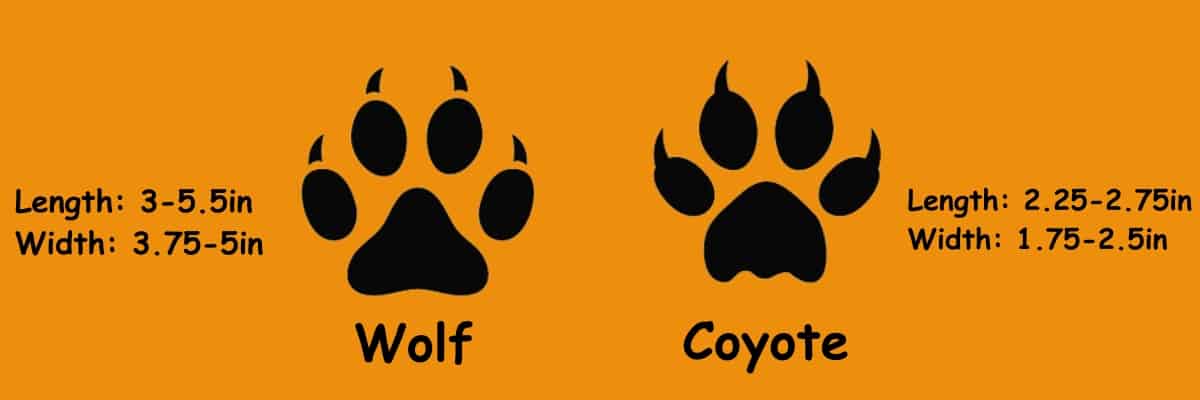
As you know the size of the wolf is much bigger than the size of the coyote. It means the wolf also must have larger size tracks. The shape of their tracks might be similar but there is a clear difference in terms of their track size. On average, the size of the coyote’s footprint lies between 2.25 to 2.75 inches in length and 1.75 to 2.5 inches in width. On the other hand, the wolf has a much larger print having a length in the range of 3 to 5.5 inches and a width of 3.75 to 5 inches.
Weight: gray wolf vs coyote
When it comes to weight, the size of the wolf is almost three times larger than the size of a coyote. On average, the weight of the wolf lies between 70 to 150 pounds which is almost equal to the weight of the German shepherd while the weight of the coyote lies in the range between 15 to 50 pounds which is almost equal to the weight of a large size dog.
Silhouette: Coyote versus wolf
The overall body shape of the wolf is much larger and wider than the body shape and size of the coyote. The average height of the grey wolf is almost 26 to 32 inches while the height of the coyote is smaller and lies in the range between 21 to 24 inches. If we measure the length of these animals then the length of the coyote from the nose to the tail end of its body is almost 4.5 feet while the length of the wolf lies in the range between 5 to 6.5 feet.
Lifespan: wolves vs coyotes
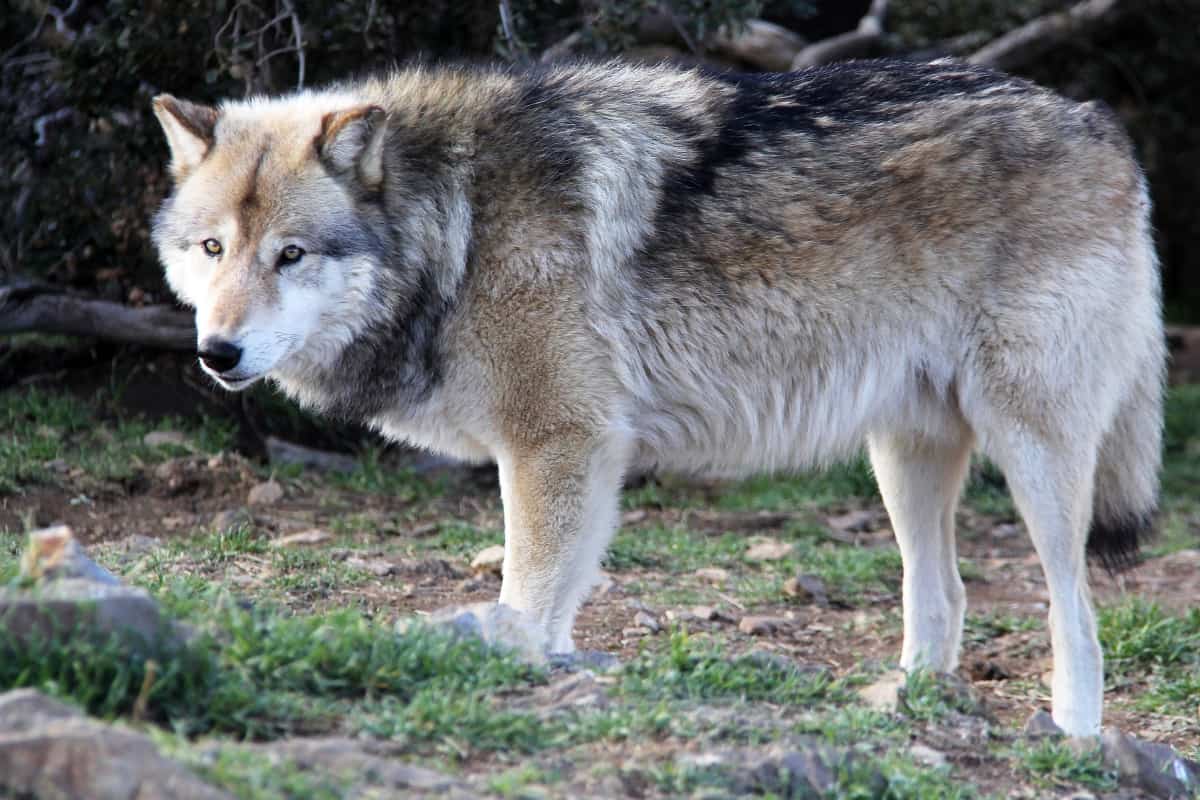
The lifespan of both of these animals varies in both the wild and in captivity. In the wild, the wolf takes a lot of risks in their life and could barely survive 8 to 10 years in the wilderness. Some of them have also lived till 14 to 15 years. In captivity, they could easily live up to 18-20 years. The longest surviving wolf has been the female 19-years old wolf named Maddah.
On the other hand, the lifespan of the coyote is almost the same as the wolf. In the wild, they could survive till 8 years and some of them even don’t survive till they become 3 years old. In captivity, they can live quite long and could easily survive up to 20 years if they are provided proper care in the form of a balanced diet, medication, and exercise.
Diet
Coyote is omnivores but it consumes primarily meat in the form of small mammals like rabbits, mice, squirrels, snakes, insects, birds, etc. In case of emergency, they also target large animals like deer and sometimes fruits and vegetables. They also consume a large number of rodents and also maintain their ecological role in society.
On the other hand, wolves are carnivore mammals and only target small and big-sized mammals for the source of their food. They are very big-sized wild animals and like to consume a lot of food at a time. They like to hunt in packs and mainly target very large animals. On a daily basis, they can consume 4 to 20 pounds of meat. The common sources of their diets are elk, deer, and moose. They also target small mammals like raccoons, mice, beavers, hares, etc. They can also travel for very long distances in search of their prey.
Habitat
Coyote has a very vast habitat range. They exist throughout the North American continent from Panama in the south to Alaska and Canada in the North. They could survive in a variety of environments and habitats like deserts, Great Plains, mountains, forests, marshes, woods, etc. The territory of the coyotes also occasionally overlaps with the territory of wolfs. Due to the destruction of their local habitats in the form of deforestation and human settlements, they are increasingly found in urban and semi-urban areas.
Gray wolves have more expanded territory than the territory of the coyotes. They even exist in vast quantities outside the North American region. When it comes to the USA, they mainly exist in the states like Michigan, Wisconsin, Ohio, Idaho, Montana, Wisconsin, and Wyoming. In the Mexican region, there are protected parklands for the long-term survival of the wolves in specific territories. Generally, you can find these animals in the deserts, forests, woods, tundra, etc.
Social behavior

Wolfs do different kinds of acts in their life to show their talent at any specific time. For instance, they communicate with the help of their various kind of sounds like howling, barking, yipping, etc. They also do scent marking for defining their territory. Sometimes they roll over on their back, tuck, or tail to show their playful behavior. Sometimes they also lick the mouth of other wolves to show their love. They stoop to exhibit their submissiveness. They mainly howl to send a message to their long-distance pack members. They snarl to give challenge their counterparts. They bark to warn other animals from coming towards them. They mostly remain active at nighttime and sleep most of the time in the daytime.
On the other hand, coyotes also make various kinds of sounds mainly howling for the sake of communication. They urinate to surround their boundaries or territories. They also like to maintain a very strong relationship with their pack members.
Procreation
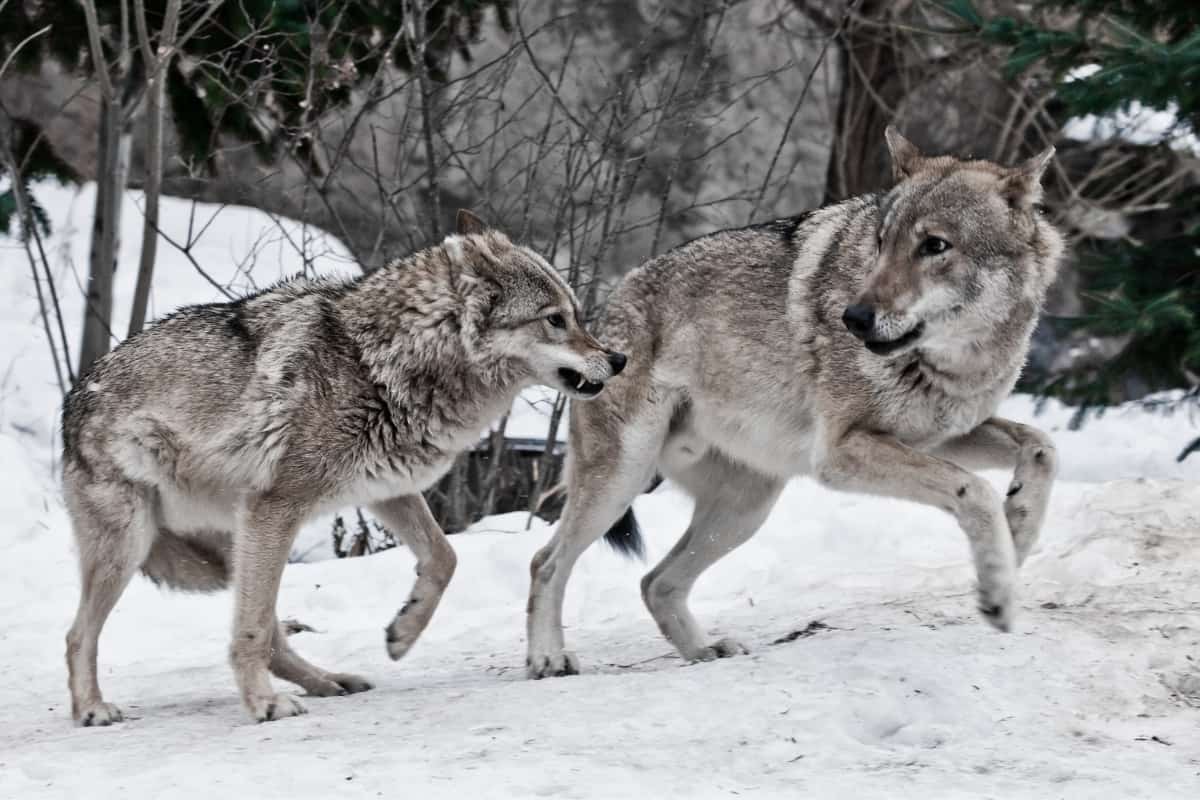
Coyote males and females mate for a very limited time because of the female coyote heating issue. On average, the female can give birth to at least 8 pups at a time and the largest recorded number of the birth has been 19. Both male and female partners play their part in taking care of their offspring. Females play the role of nursing while males provide food for the growth of Pups. At the time of their birth, they remain blind for a few days and they have to entirely rely on their parents. After almost spending 6 to 9 months with their parents, they learn various techniques and skills and finally become independent.
In the case of wolves, they choose a dominant male and dominant female wolf from their pack for breeding purposes. They complete the gestation period of at least 3 months before giving birth to at least 4 to 6 liters at a time. The breeding season of the wolves starts in spring and liters produce in the warmest time of the year. Wolf puppies have very short noses and closed eyes at the start of their birth. They weigh less than 2 pounds. After that, they grow very rapidly and gain at least 3 pounds a week. After at least 2 weeks of birth, they can open their eyes and can walk easily.
Conservation status
Wolves have a very good population throughout the world. Almost 300k wolves are living throughout the world. In Alaska, 16k of the wolves are living there while almost 5k of them are living in almost all the other states of the USA. If we estimate the population of wolves in Canada, there are almost 60k wolves you can witness throughout the country. You can also find wolves in the European and Asian regions as well as in the rest of the world.
The population of wolves has been quite stable for the past 10 years but the decline in their numbers happened since the start of the 21st century. Gray wolves are still very good in terms of their population. They are not at serious risk. But the animals like red wolves are in serious danger in terms of their population.
According to the International Union for the Conservation of Nature Red list, the population of the coyotes is least concern. They are not endangered species. Despite killing these animals on a very large scale, there is still quite a good population of coyotes available throughout the North American continent. They have become adaptable enough that they can easily adjust to urban and semi-urban areas. Overall, we can say that the population of the coyote is increasing but the population of the wolf is declining.
Poop

Both of these animals produce altogether different poop. Coyotes give out very shiny and smooth scat which is almost less than 1 inch in diameter. In the coyotes, you can find traces of ungulate hairs and bones of small mammals like rabbits and mice. The poop of the coyote has tapper ends.
On the other hand, wolves have a very rough type of scat. It is 1 to 1.5 inches in size. It is cord-like and also contains hairs and bone fragments of small animals. It also comes with taper ends.
Are coyotes wolves?
No coyotes are not wolves. There are distinct differences between these animals. Generally, coyotes are small in size but have a sleeker look along with tan or gray color fur. Most of the facial features of the coyotes are pointed-shaped. On the other hand, wolves have very large faces but rounded ears. They are hefty in size.
Frequently asked questions
Conclusion
We have compared in detail coyote vs wolf in this article. We have tried our best to cover all the aspects of these animals. Coyotes and wolves have very few similarities but many differences. We have compared them based on these differences. If you are confused about these animals due to their similar appearance then you must read this article thoroughly and clear all your confusions about these very important wild animals. Wolves are universally known wild animals while the territorial range of the coyote is limited to the North American continent.

Izzy is an experienced ranch worker who has a passion for exploring nature and getting up close to wildlife. With her connections to various animal organizations, Izzy is well-versed in animal care and rehabilitation.

